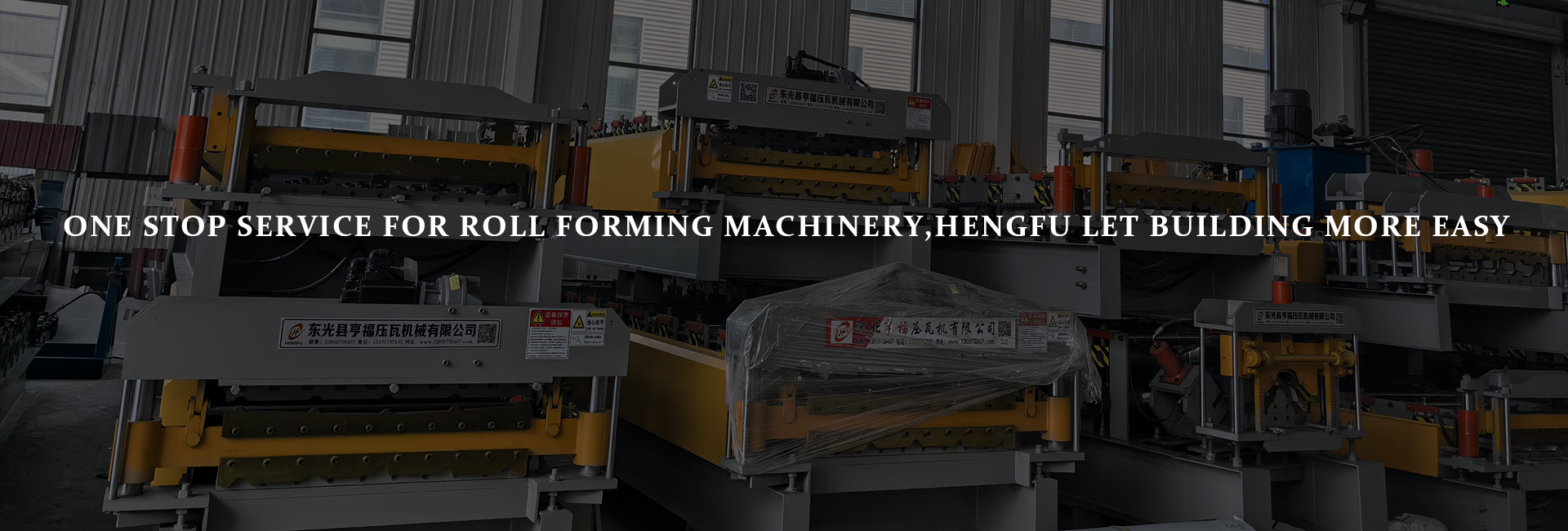In the current era where the construction industry is continuously advancing towards industrialization and intelligence, roof panel forming machines, as key equipment for metal roofing production, play a decisive role in construction efficiency and quality with their technological development. As market demands change and technology progresses, roof panel forming machines are undergoing new technological transformations. Based on the current industry situation, this article will deeply analyze the technological innovation directions of roof panel forming machines and predict their future development trends.
1. Introduction: The Industry Value of Metal Roof Forming Machines
1.1 Market Growth Trends of Metal Roofs and the Need for Construction Efficiency
In recent years, metal roofs, with their lightweight, durability, and aesthetic appeal, have been increasingly applied in industrial plants, commercial buildings, large stadiums, and other fields, leading to a continuous expansion of the market size. At the same time, construction projects have higher requirements for construction cycles and production precision, driving the technology of roof panel forming machines towards more efficient and intelligent directions.
1.2 Traditional Construction Pain Points vs. the Core Advantages of Forming Machines
Traditional metal roofing construction faces issues such as cumbersome manual operations, low production efficiency, and unstable quality, making it difficult to meet the needs of modern construction projects. Roof panel forming machines effectively solve these pain points through advantages such as automated production and high-precision processing, becoming core equipment for improving construction efficiency and quality.
1.3 Core Focus of This Article: Equipment Analysis and Efficiency Improvement Paths
This article focuses on the technological innovation of roof panel forming machines, deeply analyzes their future development directions, and explores effective paths to achieve construction efficiency improvement through technological upgrades.
2. Basic Understanding of Metal Roof Forming Machines
2.1 Equipment Definition and Functional Overview
A roof panel forming machine is a specialized device that processes metal sheets into roof panels of specific shapes through rolling processes. It can realize full-process automated operations from sheet feeding, rolling, and forming to cutting, and is widely applied in the production and manufacturing of various metal roofs.
2.2 Core Components
Rolling System: Composed of multiple sets of rollers, it forms metal sheets through gradual deformation. Its precision and stability directly affect the quality of the roof panels.
Transmission Device: Provides power for the operation of the equipment, including components such as motors, gears, and chains, ensuring the smooth operation of each process.
Control System: Responsible for setting operating parameters and monitoring equipment status. An intelligent control system also has functions such as fault diagnosis and automatic adjustment.
2.3 Classification of Mainstream Models
Classification by Number of Layers: Divided into single-layer forming machines and double-layer forming machines. Single-layer forming machines are suitable for the production of a single panel type, while double-layer forming machines can quickly switch between two panel types to meet diverse production needs.
Classification by Degree of Automation: Includes semi-automatic forming machines and fully automatic forming machines. Semi-automatic forming machines require manual assistance for some operations, while fully automatic forming machines achieve full-process automated production.
2.4 Analysis Directions of Technical Parameters
Forming Speed: Reflects the production efficiency of the equipment. High-speed forming needs to ensure precision at the same time.
Applicable Range of Sheet Materials: Covers metal sheets of different materials and thicknesses. The wider the range, the stronger the versatility of the equipment.
Precision Indicators: Such as dimensional errors, surface flatness, etc. High precision is the key to ensuring the installation quality of the roof.
3. Core Mechanisms for Efficiency Improvement
3.1 Principles of Automated Production Processes Shortening Construction Periods
Automated production enables roof panel forming machines to automatically complete each link of sheet processing according to preset programs, reducing manual intervention and equipment start-stop times, and achieving 24-hour continuous operation, thus greatly shortening the production cycle.
3.2 Advantages of High-Precision Forming in Reducing Material Waste
High-precision rolling and cutting systems, combined with advanced sensors and intelligent control technologies, can monitor and correct processing deviations in real-time, minimizing the scrap rate, effectively reducing material waste, and lowering production costs.
3.3 Cost Reduction of Mold Changes through Multi-Specification Sheet Compatibility
Forming machines with multi-specification sheet compatibility can achieve continuous production of different types of roof panels by quickly adjusting parameters and replacing molds, avoiding the time and cost losses caused by frequent mold changes.
3.4 Optimization of Operational Complexity through Intelligent Control Systems
Intelligent control systems simplify operation processes through graphical interfaces and automated algorithms. Operators only need to input production parameters, and the equipment can automatically optimize operating strategies and provide real-time warnings of potential faults, reducing operational difficulty and maintenance costs.
4. Recommendations for Selection and Use
4.1 Considerations for Selecting Machine Types Based on Project Scale
Small-scale projects can choose semi-automatic single-layer forming machines to control costs; large-scale projects need to give priority to fully automatic double-layer forming machines to meet large-scale and diversified production needs.
4.2 Importance of Brand and After-Sales Guarantees
Choosing equipment from brands with mature technologies and good reputations provides more guarantees in terms of quality and after-sales service, ensuring the stable operation of the equipment and reducing downtime risks.
4.3 Tips for Daily Maintenance and Fault Prevention
Regularly clean, lubricate, and inspect equipment components, establish maintenance files, and predict faults in advance through data analysis to extend the service life of the equipment.
4.4 Interpretation of Industry Certifications and Safety Standards
When purchasing, confirm whether the equipment has passed industry certifications such as CE and ISO to ensure compliance with safety, quality, and environmental standards, and guarantee construction safety and smooth project acceptance.
5. Industry Trends and Future Prospects
5.1 Directions of Intelligent Upgrades
AI Regulation: In the future, roof panel forming machines will deeply integrate AI technology, being able to automatically optimize operating parameters based on factors such as sheet characteristics and production environments, achieving autonomous decision-making and precise control.
Remote Monitoring: With the help of IoT technology, real-time remote monitoring and fault diagnosis of equipment operating status can be realized, facilitating timely maintenance and management and improving equipment management efficiency.
5.2 Integration of Green and Environmentally Friendly Technologies
Energy Consumption Optimization: Research and develop high-efficiency energy-saving motors and intelligent energy management systems to reduce the energy consumption of equipment operation and respond to the green development needs of the construction industry.
Material Recycling: Improve equipment design to increase the utilization rate of metal sheets, and at the same time, explore waste recycling and reuse technologies to reduce resource waste and environmental pollution.
5.3 Prediction of Market Competition Patterns and Technological Iterations
The intensification of market competition will prompt enterprises to increase R&D investment, driving rapid technological iterations of roof panel forming machines. New forming processes, high-performance materials, and innovative structural designs will continue to emerge, with equipment performance and functions continuously upgraded to meet the increasingly diversified needs of the construction industry.
6. Conclusion: Equipment Empowering Construction Transformations
The technological innovation and development of roof panel forming machines are important forces driving construction industry transformations. From intelligent upgrades to the integration of green and environmentally friendly technologies, future roof panel forming machines will provide strong support for construction projects with higher efficiency, lower costs, and better quality. Paying attention to these development trends will help enterprises make early layouts, choose more suitable equipment, and gain an advantage in the fierce market competition.







